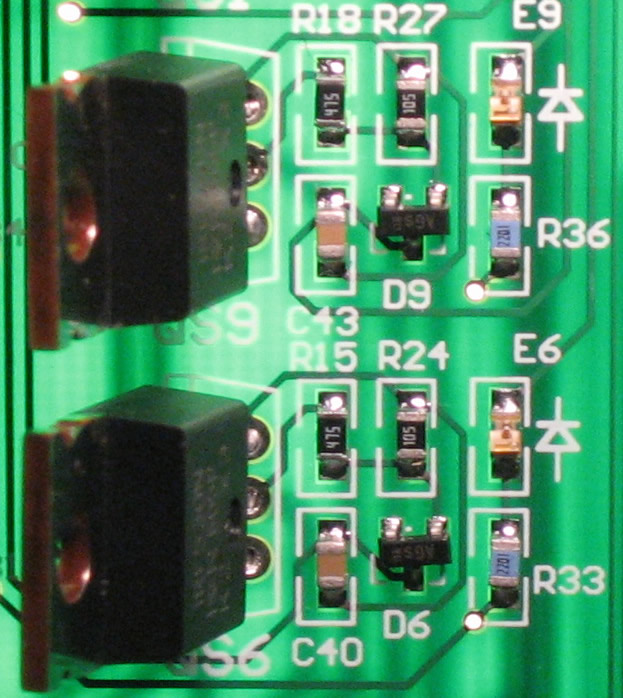The problems associated with the original Gottlieb driver board are numerous - connections to the CPU can be corroded and cause poor driver/lamp signals; the MPS-U45 is a very difficult transistor to find; and the old 2N3055 transistors burned holes through the PCB. Ni-Wumpf has redesigned the System 1 driver board to address these issues, and adds in a few more features that should prove useful:
- Each solenoid has fault detection circuitry that identifies failed playfield/driver board components
- FET solenoid transistors
- Higher rated transistor components for all circuits
- Discrete components for easier/less-expensive service repair in the future. Using a transistor array is neat, but costly, when one lamp in the array fails!
- Modern component architecture uses currently available parts for easy field service - only parts that do not normally fail are surface mounted
- Diode isolated grounding to prevent playfield lamp problems from the board
Each driver circuit is equipped with fault detection circuitry and LED's that will blink when actuatued, and light steady to indicate circuit failure.
Note that the LED will remain lit when a game does not support the associated playfield driver components. Similarly, it will light if the fuse is blown, or the coil is shorted.

The board was designed to follow the original Gottlieb component functionality as described in the original driver board. So where the original board had ICs Z1 - Z9, this board has the same numbered components. Where the lamp transistors were Q1 - Q24, a gap, and then Q33 - Q44, this board has similarly labeled components that are numbered Q1 - Q36 (no gap). And where the original board had solenoid 1 - 8 output transistors, this board has FETs QS1 - QS8. In this way, the user can follow the original schematics when troubleshooting this board.
It should also be noted, that for those games that do NOT have chime boxes for sound, and instead have electronic sound boards, the LEDs for QS2 - QS4 will be lit normally, as these circuits no longer have high voltage detection requirements.